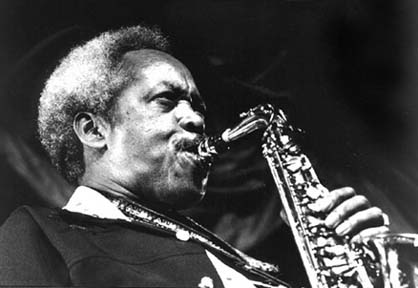I receive a lot of questions from students about how to make their solos sound more like “jazz” and usually it emerges that they either haven’t listened to enough music, or aren’t able to integrate what they’ve heard into their own playing.
With all the college courses, web-sites, method books, etc., out there purporting to “teach” jazz, I think it’s really important to understand that while all of this material is great, and you can learn a lot from it, when it comes to playing jazz, everybody is their own best teacher. Virtually every great jazz player has basically taught themselves to play by copying the playing of their heroes. Playing jazz is like learning a language, and the easiest way to sound authentic is to copy native speakers. In music, the best way to do this is through “transcribing.” Transcribing is simply listening to a recording and either notating, memorizing, playing it back on your instrument, or all three!
At this point in the discussion, the student will often say something like “my ear isn’t that good, I can’t possibly do that.” But it’s really not possible to play jazz without the ability to somehow “play what you hear.” Besides, your ear may be better than you think and if you never use it, how can it ever improve? The first time you try to transcribe, it may take a lot of time, but it will also pay off with more results than you could get from just about any other single activity and it will get easier with every transcription.
A few tips:
1) If you are new to transcribing, don’t start with anything too difficult. Try simply learning the melodies to some standard tunes by ear at first. Listen to guitar players like Kenny Burrell, Barney Kessell, Grant Green, or Jim hall, and also try horn players like Miles Davis, Chet Baker or Paul Desmond (guys who don’t play a million notes). Don’t start with something like John Coltrane (unless it’s maybe something from one of his “Ballads” albums). Go for some easy victories and build your confidence, then move on to the more difficult players as your skills increase.
2) Get Transcribe! software from www.seventhstring.com It lets you actually see the wave or mp3 file and you can place markers for Sections, Measures, or even Beats if you want, which makes it really easy to find your place and work on specific passages. It can also slow down the music without changing pitch. It’ll be the best $49 you ever spent (I bought it years ago and still use it almost every day!)
3) Work things through measure by measure, and SING the lines BEFORE you try to play them on your instrument.
4) Try writing it down before playing it (if you can). It can be pretty difficult to remember a whole chorus of somebody’s solo, so having it on paper first can aid you in memorizing it (although Wes Montgomery taught himself to play by copying Charlie Christian’s solos note-for-note and never wrote them down, so if you can do it this way, fine). If your handwriting isn’t great, try a simple notation program like Guitar-Pro http://www.guitar-pro.com It also allows you to enter notation in tablature form (while generating standard notation simultaneously).
5) Don’t feel like you necessarily have to learn entire solos, especially at first. Why not start out with just a chorus you like, or even just a lick or phrase. Simply building up a little vocabulary of ii- V7 I phrases, blues licks, etc., will add GREATLY to helping you sound more authentic. If you take a “phrase-by-phrase” approach, try transposing these phrases to all other keys and considering their harmonic context.
The most important thing is to DO THIS EVERY DAY!!!!

